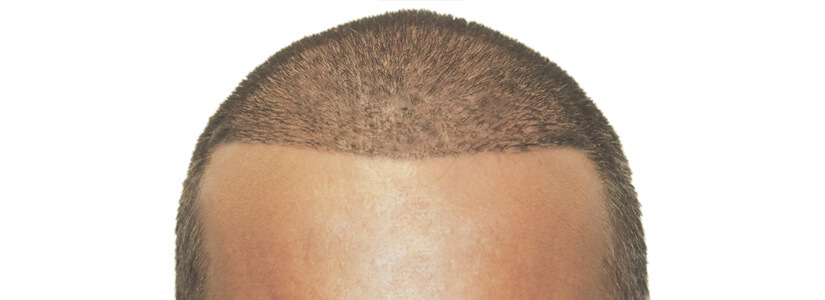Alopecia Barbae: What to do if You’re Losing Your Beard
November 14, 2018
Men losing hair is like women losing bobby pins, before you know it they’re all gone. More than 85% of men under 50 experience hair thinning or hair loss leading to pattern baldness. However, men aren’t alone in this as women are together with men in losing hair. According to studies, more than 40% of women go through some kind of hair loss before turning 40. There are several reasons for hair loss in men and women. However, the most prevalent ones are genetics, aging, hormonal imbalance, medication side effects, and an unhealthy diet. Due to excessive hair loss, the self-confidence and self-esteem of both men and women take a serious hit. So, they try every available option for hair restoration and hair replacement, from home remedies to hair grafting.
In this article, we will talk about one of the most commonly used hair replacement options – hair grafting. So, let’s see what it is and how it is performed.
Hair grafting is a technique used in hair transplantation. Sometimes the word is used interchangeably with a hair transplant.
The word graft refers to a hair containing skin strip extracted from the body of the person undergoing a hair transplant. The act of extracting the strip of skin is often termed as hair grafting.
Normally, hair grafts are harvested from the occipital scalp, which is labeled as the standard donor zone. The back of the scalp has higher sustainability than other body parts. However, if someone doesn’t have enough grafts in their donor zone, they can be harvested from any other body part.
Hair grafts must be healthy otherwise there is a lesser chance of their regrowth. So, after harvesting healthy hair grafts from the donor zone, they are transplanted into hair thinning areas and bald spots.
When the surgeon removes tissues from the donor region, hair grafts are formed. The following determine in which shape and size the graft will be harvested:
After determining the size and shape of hair grafts, a small amount of healthy tissue is harvested from the donor site. This is then transplanted to the area on the scalp that doesn’t have enough hair.
A hair transplant is performed by following one of the two commonly used techniques. In both of these techniques, hair grafting is performed differently. The hair grafting techniques are mentioned below:
In Follicular Unit Transplant, healthy hair grafts are harvested at once. To do this, a linear strip is removed from the occipital scalp. Afterward, stereoscopic dissecting microscopes are used to harvest grafts from the donor strip.
Typically, each hair graft contains 2-3 hair in the follicular unit. After harvest, the surgeon conserves and prepares the hair grafts for transplant into the recipient region.
Once the grafts are ready for transplant, the surgeon will make tiny incisions in the recipient region on the scalp. Then, he/she will place each graft individually in the incisions. The length and direction of the transplanted hair are matched with the surrounding hair.
On the other hand, in Follicular Unit Extraction, hair grafts are harvested from the donor region individually. So, instead of a long strip, tiny scars are left all over the donor zone.
Due to the linear scar in FUT, it is a less preferred technique as compared to FUE. FUE is the less invasive of the two techniques. So, patients prefer it over FUT.
For hair growth to start after a hair transplant, hair grafts must survive. However, not all grafts can survive after transplant. To make maximum grafts survive, surgeons only transplant healthy hair as they have the maximum chances of surviving.
Several reasons can cause grafts to fail to take roots in the scalp and as a result, they fall off. Some of these reasons are:
After harvest, grafts must be kept in a liquid solution like saline. Otherwise, they will die. Several studies have reported that an average healthy hair graft doesn’t survive for more than 16 minutes in a dry environment. Healthy grafts are usually in a limited number. So, instead of wasting healthy grafts in dry environments, it’s better to keep them in a liquid solution. Otherwise, there won’t be enough hair grafts for transplant.
Hair grafts and hot atmospheres don’t mingle well. If you keep hair grafts in a hot environment after harvest, they will be damaged. And if hair grafts damage before transplant, they won’t regrow.
So, according to experts, hair grafts must be stored in a cold setting. Usually, they are kept chilled inside a freezer.
Oxygen is not only essential for humans to breathe, but it is also crucial for hair grafts. So, when hair grafts are harvested from the donor region, their oxygen supply is cut off. Therefore, it is important to use them as soon as possible or keep them in an oxygen-sufficient environment. Otherwise, they will not function properly and as a result, the hair transplant will be failed.
Human beings have a habit of taking every blessing for granted as long as they have it. Once they lose it, they understand its worth. The same is the case with hair. When we have natural hair, we don’t do proper hair care to keep them healthy and fresh. But, as soon as, excessive hair loss and hair thinning starts we leave no stone unturned to bring back our lost locks.
Hair loss can have a severe effect on a person’s psychological state of mind. It can impact a person’s entire life fro, career to relationships. However, the worst hit is always the person’s self-confidence.
To not experience such misery, there are options available that can help treat, replace, and restore hair. A hair transplant in Dubai is one such method. With the help of a hair transplant, men and women can bring back their lost locks. As a result, they can experience a stress-free life.
Dr. Cagatay Sezgin is a celebrity hair transplant surgeon with over 20 years of experience in hair transplantation and restoration. He is the First Turkish Board Surgeon to become a member of the International Society of Hair Restoration Surgery (ISHRS) and the Asian Association of Hair Transplant Surgeons (AAHRS). Moreover, he has the honor of becoming the first hair transplant surgeon in the world to perform hair, eyebrow, and beard transplantation all in one case and that too in a single session.

November 14, 2018

July 16, 2016